2 October 2023
Monday
On October 2, 2023, the United States is scheduled to release a highly impactful news announcement regarding ISM Manufacturing PMI. This announcement is expected to have a significant impact on trading pairs.
USD - ISM Manufacturing PMI
Due to its role as a leading indicator of economic vitality, traders exhibit significant interest in this metric. Businesses are known for their prompt responses to market dynamics, and their purchasing managers provide invaluable, up-to-date perspectives on a company's assessment of the prevailing economic landscape.
In August, the Manufacturing PMI® had stood at 47.6 %, indicating a 1.2 percentage point increase compared to July's 46.4 %. This had marked the ninth consecutive month of contraction in the overall economy, following a 30-month period of expansion. The New Orders Index had remained in contraction at 46.8 %, down by 0.5 percentage points from July's 47.3 %. The Production Index had improved to 50 %, reflecting a 1.7-percentage point increase from July's 48.3 %. The Prices Index had registered at 48.4 %, surging by 5.8 percentage points from July's 42.6 %. The Backlog of Orders Index had increased to 44.1 %, up by 1.3 percentage points compared to July's 42.8 %. Lastly, the Employment Index had climbed to 48.5 %, marking a 4.1 percentage point increase from July's 44.4 %.
The forecast for the US ISM Manufacturing PMI is reading an increase to 47.8 points, pointing towards a recovery in the manufacturing sector.
The upcoming ISM Manufacturing PMI is scheduled for release on Monday, October 2, 2023, at 3:00 PM GMT+1.
TL;DR
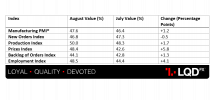
3 October 2023
Tuesday
On Wednesday, October 3, 2023, notable high-impact news announcements are expected from Australia, Switzerland, and the United States. Australia will release the Cash Rate alongside the RBA Rate Statement, Switzerland is scheduled to publish the Consumer Price Index (CPI) month-on-month (m/m), and the United States will unveil the Job Openings and Labor Turnover Survey (JOLTS) Job Openings data.
AUD - Cash Rate
Traders closely monitor the Cash Rate because it serves as one of the key instruments through which the RBA Reserve Bank Board communicates its monetary policy stance to investors. This rate announcement not only reveals their decision regarding interest rates but also provides valuable insights into the economic factors influencing that decision. Crucially, it delves into the economic outlook and provides hints about potential future policy decisions.
On September 5, 2023, the Reserve Bank of Australia maintained a steady cash rate of 4.1% during the final meeting under Governor Philip Lowe. This decision marked the third consecutive month of rate stability and was in line with market expectations. The board acknowledged that although inflation had already reached its peak, it remained at elevated levels and was projected to remain so for an extended period. The central bank reiterated the potential necessity for further monetary tightening to bring inflation back within the target range of 2 to 3% within a reasonable timeframe, underscoring that any adjustments to the rate would be contingent on evolving economic and price dynamics. The board provided a projection that inflation would reach approximately 3.25% by the end of 2024 and return to the desired range by late 2025.
The forecast for the Australian Cash Rate is reading a steady 4.1%, unchanged in the last 4 months.
The forthcoming Cash Rate announcement is scheduled for Tuesday, October 3, 2023, at 4:30 AM GMT+1.
TL;DR
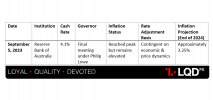
AUD - RBA Rate Statement
Traders closely monitor the RBA Rate Statement because it serves as a key instrument employed by the RBA Reserve Bank Board to convey their monetary policy stance to investors. This statement not only reveals their interest rate decision but also provides commentary on the economic factors that informed their decision. Most significantly, it delves into the economic outlook and provides hints about potential future policy decisions.
The RBA's rate statement is anticipated to address key aspects, including their evaluation of current economic conditions encompassing inflation, employment, and growth, their economic outlook for Australia in the near and long term, as well as their strategies for monetary policy, particularly future interest rate adjustments, and this statement holds significance for both businesses and consumers, offering valuable insights for informed decisions regarding investments, expenditures, and borrowing, though it's essential to acknowledge that interest rates can be influenced by various other factors like global financial conditions and the performance of international economies.
The upcoming RBA Rate Statement is set to be released on Tuesday, October 3, 2023, at 4:30 AM GMT+1.
CHF – CPI m/m
Traders closely track the Consumer Price Index (CPI) because consumer prices comprise a substantial share of overall inflation and exert a substantial influence on currency valuation. When prices experience an upward trend, central banks are prompted to contemplate increasing interest rates to meet their mandate of managing inflation.
In August 2023, the Consumer Price Index (CPI) registered a 0.2% monthly increase, reaching a value of 106.4 points (with December 2020 as the reference point), while year-on-year inflation stood at +1.6%, as reported by the Federal Statistical Office (FSO). This upward trend for the month was primarily driven by factors such as elevated fuel and heating oil prices, as well as increased housing rentals and securities account fees, offset by reduced expenses associated with private transportation hire, air travel, and international package holidays. These data points offer valuable insights into prevailing economic trends.
The forecast for Swiss CPI m/m is reading a slight increase to 106.7 points.
The forthcoming Consumer Price Index (CPI) month-on-month data is scheduled for release on Tuesday, October 3, 2023, at 7:30 AM GMT+1.
USD - JOLTS Job Openings
JOLTS holds significance for traders as it serves as a measure of job opportunities within the U.S. economy. An increase in job openings signals a constrained labor market, potentially resulting in wage hikes and inflationary pressures.
In July, US job openings unexpectedly decreased to a two-year low, signaling a slowdown in labor demand. According to the Bureau of Labor Statistics' JOLTS report, there was a decline from 9.17 million in June to 8.83 million openings, marking the sixth drop in seven months. The quits rate, indicating voluntary job departures, had fallen to 2.3%, the lowest since early 2021, reflecting reduced confidence in finding new employment opportunities. Job openings had declined across sectors such as professional services, healthcare, and government. Despite the decrease in openings, increased workforce participation had improved the balance in the labor market and moderated wage growth, while the historically low unemployment rate had persisted.
The forecast for the US JOLTS Job Openings report is reading a decrease to 8.5 million.
The eagerly anticipated JOLTS Job Openings report is scheduled for release on Tuesday, October 3rd, 2023, at 3:00 PM GMT+1. Investors and analysts are keenly awaiting this data to gain insights into the current labor market conditions.
TL;DR
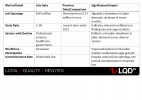
4 October 2023
Wednesday
Mark your calendars for Wednesday, October 4th, 2023, as it promises to be a day filled with significant announcements. New Zealand is gearing up to reveal its Official Cash Rate alongside the RBNZ Rate Statement. Meanwhile, in the United States, eyes will be on the release of the ADP - Non-Farm Employment Change and the ISM Services PMI data. These announcements hold crucial insights into economic developments and are eagerly anticipated by investors and analysts alike.
NZD - Official Cash Rate
Investors closely monitor the Official Cash Rate because short-term interest rates play a pivotal role in determining currency value. In the world of investing, many other indicators are analyzed primarily to forecast potential future changes in interest rates.
In its August meeting, the Reserve Bank of New Zealand chose to maintain the official cash rate (OCR) at 5.5%. This decision marked the second consecutive month without a rate change, in line with market expectations. The bank acknowledged that its prior series of rate hikes, totaling 525 basis points since October 2021, had tightened monetary conditions, curbing spending, and alleviating cost pressures. However, the persistently high inflation necessitated maintaining the OCR at this restrictive level to bring it back within the target range of 1 to 3% annually by the second half of 2024.
The RBNZ's then-current outlook anticipated that the OCR would peak at its existing level of 5.5%, with some potential for an additional hike, though no rate cuts were expected until the first half of 2025. While the committee viewed the risks surrounding inflation as balanced, it remained cautious about the possibility that economic activity and inflation indicators might not decelerate as projected. In the medium term, New Zealand's exports could have faced increased pressure due to a potential slowdown in overseas demand, particularly in key markets like China.
The forecast for the New Zealand Official Cash Rate is reading 5.5%, remaining unchanged for the 4th time in a row.
The eagerly awaited announcement of the next Official Cash Rate is scheduled for Wednesday, October 4th, 2023, at 02:00 AM GMT+1. Investors and financial experts are keeping a close watch on this event as it carries significant implications for the country's monetary policy and financial markets.
TL;DR
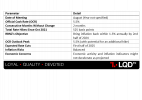
NZD - RBNZ Rate Statement
The significance of the RBNZ Rate Statement lies in its role as a pivotal communication tool employed by the Reserve Bank of New Zealand to convey crucial aspects of monetary policy. This statement not only reveals the central bank's verdict on interest rates but also offers comprehensive insights into the economic conditions that have influenced this decision. Perhaps most importantly, it provides a forward-looking perspective on the economic outlook, offering valuable clues about potential future policy directions, and making it a vital resource for anyone seeking to understand the country's economic trajectory.
In the upcoming RBNZ Rate Statement, several key topics are expected to be addressed. These include an evaluation of the current status of the New Zealand economy, encompassing factors such as growth, inflation, and employment. The statement is likely to provide insights into the RBNZ's assessment of potential risks facing the New Zealand economy. Furthermore, readers can anticipate information regarding the central bank's monetary policy intentions, including its perspective on interest rates and other policy measures. This statement will be closely scrutinized by investors and analysts for guidance on the future direction of New Zealand's monetary policy.
The forthcoming RBNZ Rate Statement is scheduled for release on Wednesday, October 4th, 2023, at 02:00 AM GMT+1. This event is eagerly anticipated by financial observers and analysts for insights into New Zealand's monetary policy and economic outlook.
USD - ADP Non-Farm Employment Change
Monitoring job creation is crucial as it serves as a valuable predictor of consumer spending, a key driver of a substantial portion of the overall economic activity.
In August 2023, private businesses in the United States hired 177,000 workers, marking the lowest monthly increase in five months and falling short of the market's anticipated 195,000 rise. This followed an upwardly revised gain of 371,000 jobs in July. Notably, the service-providing sector contributed 154,000 of these jobs, with prominent additions in education & health (52,000), trade, transportation & utilities (45,000), leisure & hospitality (30,000), professional & business (15,000), and information (5,000). Furthermore, the goods-producing sector saw an increase of 23,000 jobs, driven by growth in manufacturing (12,000), construction (6,000), and mining (5,000).
The forecast for the US ADP Non-Farm Employment Change is reading a decrease of 160,000 people, in non-farm private employment.
An eagerly awaited announcement is on the horizon, slated for release on Wednesday, October 4th, 2023, at 1:15 PM GMT+1. This forthcoming event is poised to attract significant attention and interest.
TL;DR
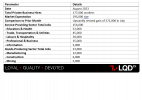
USD - ISM Services PMI
The ISM Services PMI holds significant importance as an early indicator of economic well-being. It is highly valued by traders for its ability to provide timely insights into market conditions. Additionally, businesses are swift to respond to market shifts, and their procurement managers rely on the ISM Services PMI for the most up-to-date and pertinent information to make informed decisions regarding their business forecasts.
In August 2023, the ISM Services PMI unexpectedly surged to 54.5, signaling the strongest growth in the services sector in six months, surpassing both July's 52.7 and forecasts of 52.5. Notable increases were observed in various key areas, including business activity, new orders, employment, and inventories. Supplier deliveries also improved significantly, marking the fastest performance in over a decade. However, price pressures intensified during the same period. Despite some variation in sentiment among industry respondents, the majority expressed positivity about business and economic conditions, according to Anthony Nieves, Chair of the ISM Services Business Survey Committee.
The forecast for the US ISM Services PMI is reading a decrease to 53.7 points.
The ISM Services PMI is set to be released on Wednesday, October 4, 2023, at 3:00 PM GMT+1. This research is prepared to provide important data for investors and analysts alike, providing useful insights into the status of the services sector.
5 October 2023
Thursday
The United States is scheduled to release its unemployment claims data on Thursday, October 5, 2023, an eagerly awaited report that will offer valuable insights into the state of the nation's labor market and economic trends.
USD – Unemployment Claims
Unemployment claims hold a critical role in assessing economic health due to their significance as an indicator. While often considered a lagging metric, the number of unemployed individuals serves as a vital signal for gauging the overall economic well-being. This is primarily because consumer spending closely correlates with labor-market conditions, rendering unemployment a pivotal measure of economic vitality. Furthermore, it carries significant weight for policymakers tasked with guiding the nation's monetary policy.
Last week, the number of Americans who had applied for unemployment benefits inched up to 204,000, marking a slight increase from the revised figure of 202,000 in the prior week, as reported by the government. However, it's important to note that these numbers reflected exceptionally low levels of layoffs, and there were no indications of a significant rise in unemployment. Such low jobless claims suggested that the economy remained stable and resilient. Typically, unemployment claims rose during economic downturns and impending recessions, but economists had anticipated new claims for the week ending on September 23 to total 214,000.
The forecast for the US Unemployment Claims is reading an increase to 210,000 individuals.
The upcoming release of unemployment claims is scheduled for Thursday, October 5th, 2023, at 1:30 PM GMT+1.
6 October 2023
Friday
An important news release is slated for Friday, October 6, 2023, as Canada prepares to publish its employment change and unemployment rate data, coinciding with the United States' announcement of its month-over-month (m/m) Average Hourly Earnings, Non-Farm Employment Change, and Unemployment Rate statistics. This simultaneous disclosure of vital economic indicators from both countries will be closely monitored by financial analysts, policymakers, and investors, influencing economic assessments and decision-making.
CAD - Employment Change
The attention to this announcement is driven by the fact that job creation serves as a crucial leading indicator for consumer spending, which plays a pivotal role in the majority of overall economic activity.
In August 2023, the Canadian economy saw a robust addition of 39.9 thousand jobs, surpassing market expectations of a 15.0 thousand increase. Notably, employment in professional, scientific, and technical services surged by 52.1 thousand, marking the industry's most significant growth since December 2022. Additionally, the construction sector experienced a notable uptick of 33.8 thousand jobs, partly offsetting the sharp decline seen in July. Moreover, there were employment gains in "other services," which encompass personal and repair services, with an increase of 20.9 thousand, as well as in transportation and warehousing, which saw a rise of 12.7 thousand jobs. However, employment declined in educational services (-44.2 thousand), manufacturing (-29.5 thousand), finance, insurance, real estate, rental, and leasing (-16.3 thousand), and agriculture (-10.5 thousand). Among Canadian provinces, Alberta (17.7 thousand), British Columbia (12.0 thousand), and Prince Edward Island (1.8 thousand) witnessed employment growth, while Nova Scotia saw a decline of 3.6 thousand jobs.
The forecast for Canadian Employment Change is reading a decrease of 20,000.
The forthcoming announcement regarding Employment Change in Canada is scheduled for release on Friday, October 6th, 2023, at 1:30 PM GMT+1.
TL;DR
CAD - Unemployment Rate
Many people pay close attention to this data because even though it's considered a bit slow to show changes, the number of people without jobs can tell us a lot about how the economy is doing. It's closely linked to how much people spend, and that's important for the overall economic picture.
In August 2023, Canada's unemployment rate held steady at 5.5%, the same as the previous month and slightly below the expected 5.6%. This data suggests a slight softening in the Canadian job market compared to the previous year. However, it's important to note that the jobless rate is still significantly lower than pre-pandemic levels, indicating a relatively strong labor market historically. The number of unemployed individuals increased by 14.2 thousand to a total of 1.181 million, with more than half of them being out of work for over a month. Joblessness among core-aged women decreased by 0.4%, offsetting a 2.5% increase among young males. Unemployment rates for young women and middle-aged men remained relatively stable. Additionally, the overall workforce grew by a net of 39.9 thousand individuals, reaching 20.166 million, surpassing expectations of a 15 thousand increase.
The forecast for the Canadian Unemployment Rate is reading a slight increase to 5.6%.
The forthcoming announcement regarding Canada's unemployment rate is scheduled for release on Friday, October 6th, 2023, at 1:30 PM GMT+1.
USD - Average Hourly Earnings m/m
Many people take notice of this because it helps predict how prices for things consumers buy might change. When businesses increase wages, they often raise the prices of their products to cover the extra costs.
In August 2023, average hourly earnings for all US private nonfarm payroll employees increased by 8 cents, or 0.2%, to reach $33.82. This followed a 0.4% gain in the previous month but fell short of market expectations, which had anticipated a 0.3% increase. It marked the smallest increase in average hourly earnings since February 2022. For private-sector production and nonsupervisory employees, average hourly earnings in August rose by 6 cents, or 0.2%, reaching $29.00. Over the past year, average hourly earnings have grown by 4.3%, slightly below market estimates of a 4.4% increase, following a 4.4% rise in the previous month.
The forecast for the US Average Hourly Earnings m/m is reading an increase of 0.3%.
The upcoming release of the average hourly earnings for the month is scheduled for Friday, October 6th, 2023, at 1:30 PM GMT+1.
USD - Non-Farm Employment Change
Job creation is a key leading indicator of consumer spending, which accounts for the majority of economic activity.
In August, the U.S. non-farm payrolls reported a gain of 187,000 jobs, surpassing the expected 170,000. However, there has been a net downward revision of 110,000 jobs over the past few months, indicating a persistent slowdown in employment growth. The private sector played a significant role, adding 179,000 jobs, with private education and health leading the way by contributing 102,000 positions. Furthermore, the leisure and hospitality sector continued to be a strong source of employment, with an increase of 40,000 jobs. On the downside, areas of weakness were observed in information (-15,000), trade and transport (-20,000, possibly linked to the Yellow bankruptcy), and temporary help (-19,000).
The forecast for the US Non-Farm Employment is reading a decrease to 150,000 individuals.
The forthcoming release of Non-Farm Employment Change is scheduled for Friday, October 6th, 2023, at 1:30 PM GMT+1.
USD - Unemployment Rate
Many people find it valuable because it's a strong indicator, even though it often reflects changes after they've happened. It matters a lot because it's closely linked to how much people spend and the overall health of the job market. Additionally, unemployment plays a big role in the country's monetary policy choices.
In August, the unemployment rate jumped to 3.8%, its highest since February 2022, with July's estimates also revised downward. However, the labor force participation rate reached 62.8%, its highest since February 2020, pre-pandemic. A broader unemployment measure, including discouraged workers and part-timers, rose to 7.1%, the highest since May 2022.
The forecast for the US Unemployment Rate is reading a slight decrease to 3.7%.
The upcoming unveiling of the unemployment rate is set for Friday, October 6th, 2023, at 1:30 PM GMT+1.
Disclaimer: The market news provided herein is for informational purposes only and should not be considered as trading advice.


